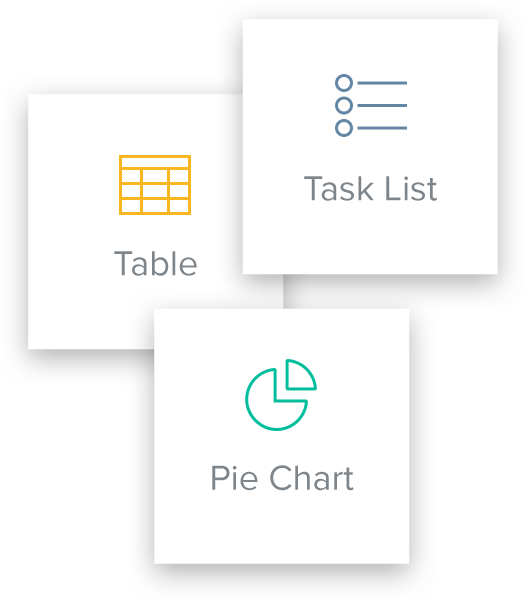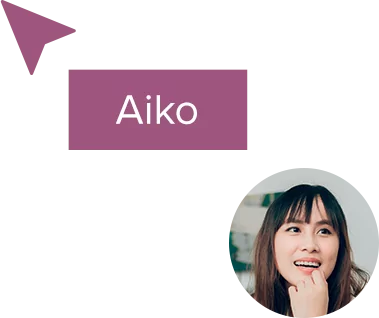Agile vs. Waterfall: Which is Right for You?
Updated by Xtensio
Introduction
In project management, two methodologies are frequently compared: Agile vs. Waterfall. Both have their unique strengths, challenges, and ideal scenarios. The choice between them can significantly influence the outcome of a project. This article aims to provide a comprehensive understanding of these methodologies, helping you make an informed decision.
Table of Contents
History and Evolution
Waterfall: The Waterfall model traces its origins back to the 1970s. It was formally introduced by Dr. Winston W. Royce in a paper where he presented the model as an initial concept, ironically without endorsing it. The model’s linear approach was inspired by manufacturing and construction processes, where each step of the process must be completed before moving on to the next.
Agile: The Agile methodology, on the other hand, was a response to the limitations of traditional models like Waterfall. In 2001, the Agile Manifesto was published, emphasizing customer collaboration, responsiveness to change, and the delivery of functional software.
Basic Principles: Agile vs. Waterfall
Agile
Iterative and Incremental Development: Agile breaks down projects into small, manageable chunks called iterations. Each iteration results in a potentially shippable product increment. This approach allows teams to release segments of a product rapidly and adapt to changes more fluidly.
Customer Collaboration: Agile places a strong emphasis on stakeholder feedback. Regular communication ensures that the product aligns with the user’s needs and expectations.
Responding to Change: One of Agile’s core tenets is its adaptability. Instead of viewing changes as setbacks, they’re seen as opportunities to improve the product.
Waterfall
Sequential Phases: Waterfall projects move through set, non-overlapping stages. These stages include requirements, design, implementation, verification, and maintenance.
Emphasis on Documentation: Each phase in Waterfall has its documentation. This thorough documentation ensures that there’s no ambiguity about what’s required at each stage.
Defined Stages: Each stage must be completed before moving on to the next. This clear structure provides a roadmap for the project’s progression.
Key Differences: Agile vs. Waterfall
Flexibility vs. Structure: Agile is known for its flexibility. It’s designed to adapt to changes, making it ideal for projects where requirements might evolve. Waterfall, with its structured phases, is more rigid and works best when project requirements are clear from the start.
Feedback Loops: Agile methodologies, like Scrum, incorporate regular feedback loops, such as sprint reviews, ensuring that the product aligns with user needs. In Waterfall, feedback is typically gathered after the product is fully developed.
Project Phases: In Agile, phases like design, development, and testing can overlap. In Waterfall, each phase must be completed before the next begins.
Advantages of Agile
Faster Feedback Loops: With regular check-ins, issues are identified and addressed quickly. This continuous feedback ensures that the product aligns with user needs.
Adaptability to Change: Agile’s iterative nature allows for easy adaptation. If a feature isn’t working or if market demands shift, Agile teams can pivot quickly.
Enhanced Collaboration: Agile promotes a collaborative environment. Daily stand-ups, sprint reviews, and retrospectives foster open communication.
Real-world Example: Spotify, the music streaming giant, uses Agile principles to continually improve its product. They’ve adopted a unique approach called “Squads“, which are small cross-functional teams that work on specific features. This approach allows Spotify to release updates frequently and stay ahead of market demands.
Advantages of Waterfall
Clear Structure and Milestones: The linear nature of Waterfall means everyone knows the plan, their role in it, and what’s expected at each stage.
Comprehensive Documentation: Detailed documentation ensures that there’s no ambiguity. This can be especially beneficial for future reference or if there’s a team change.
Predictability in Timelines: With everything mapped out from the start, it’s easier to predict project timelines and set clear expectations.
Real-world Example: NASA often uses Waterfall for its projects. When sending rockets and rovers to space, there’s little room for error. Every detail must be meticulously planned, tested, and executed.
Challenges with Agile
Requires Experienced Team Members: Agile’s success hinges on the team’s ability to self-organize and make decisions. Without experienced members, the project can easily go off track.
Potential for Scope Creep: With changing requirements, projects can grow beyond their original scope, leading to potential delays and increased costs.
Less Predictability: Without a set end date, stakeholders might become uneasy, especially if they’re used to more traditional methods.
Challenges with Waterfall
Difficult to Make Changes: Once a phase is completed, it’s challenging and costly to go back and make changes.
Delays Can Be Costly: If one phase is delayed, it can have a domino effect, pushing back the entire project.
Requires Extensive Planning: The initial phase can be time-consuming as every detail must be mapped out from the start.
When to Use Agile
Agile is best suited for projects where the end product isn’t fully defined. It’s ideal for environments that see frequent changes, such as software development.
Use Case: A tech startup developing a mobile app might choose Agile. As they gather user feedback, they realize that users want a chat feature. Since they’re working in iterations, they can easily incorporate this feedback into the next sprint.

When to Use Waterfall
Waterfall is ideal for projects with clear, well-defined requirements. It’s best suited for projects where the end product is known, and there’s little to no chance of changes.
Use Case: A company is upgrading its server infrastructure. They’ve done a thorough analysis and know exactly what’s required. Since the requirements are clear and unlikely to change, they opt for Waterfall.

Real-world Examples: Agile vs. Waterfall
Agile: Netflix is a prime example of Agile in action. They frequently release new features, test their performance, gather user feedback, and iterate. This approach allows them to stay ahead of competitors and continually enhance user experience.
Waterfall: Construction projects, like building a dam, often use Waterfall. Every detail must be planned, from the amount of concrete required to the number of workers needed. Changes mid-way can be catastrophic, making Waterfall the ideal choice.
Hybrid Approaches
It doesn’t always have to be Agile vs. waterfall: Some projects might benefit from a blend of both methodologies. For instance, the initial stages might follow Waterfall, with detailed planning and requirements gathering. Once the project moves to the development phase, it might shift to Agile, allowing for iterations and feedback.
Anecdote: A software company was contracted to develop a complex financial system. They used Waterfall for the initial stages, ensuring they had a clear understanding of the requirements. Once development began, they switched to Agile, allowing them to adapt to the client’s changing needs.
Transitioning from Waterfall to Agile
Making the shift from Waterfall to Agile can be likened to learning a new language. It requires a change in mindset, tools, and often team structure. However, with the right training and commitment, teams can make the transition smoothly.
Reference: Solutions for Agile Governance in the Enterprise (SAGE): Agile Project, Program, and Portfolio Management for Development of Hardware and Software Products by Kevin Thompson, Ph.D., provides insights into making this transition.
Tools and Technologies
Agile Tools: JIRA, Trello, and Asana are popular tools that facilitate Agile project management. They allow for easy tracking of sprints, backlogs, and user stories.
Waterfall Tools: Microsoft Project and Primavera are favorites for Waterfall projects. They offer detailed Gantt charts, helping project managers keep track of each phase.

Impact on Team Dynamics
Agile promotes a collaborative spirit. Roles are often fluid, and team members might wear multiple hats. Waterfall, with its structured approach, offers clear roles and responsibilities. Team members know exactly what’s expected of them at each stage.
Cost Implications
Budgeting for Agile can be challenging due to its iterative nature. Costs might vary from one sprint to another. Waterfall, with its clear structure, allows for a more straightforward budgeting process. However, changes or setbacks can lead to significant cost overruns.
Duration and Timelines
Agile projects, with their iterative approach, might not have a set end date. Waterfall projects, on the other hand, have clear timelines established from the start.
Stakeholder Involvement
In Agile, stakeholders are regularly involved, providing feedback at the end of each sprint. In Waterfall, stakeholders are heavily involved during the initial stages and once the product is ready for delivery.
Quality Assurance
Quality is paramount, regardless of the methodology. Agile incorporates continuous testing, ensuring that issues are identified and addressed promptly. Waterfall has a dedicated testing phase, ensuring that the final product is bug-free.
Conclusion: Agile vs. Waterfall
Whether you choose Agile or Waterfall depends on your project’s needs, your team’s expertise, and stakeholder expectations. Both methodologies have their strengths and challenges. The key is to assess the project’s requirements and make an informed decision. Agile vs. Waterfall, which one is right for you?
Frequently Asked Questions
What are Agile and Waterfall methodologies?
Agile is an iterative approach to project management and software development that prioritizes flexibility and collaboration. Waterfall is a linear and sequential approach where each phase must be completed before the next one begins.
Why is Waterfall better than Agile?
Agile is an iterative approach to project management and software development that prioritizes flexibility and collaboration. Waterfall is a linear and sequential approach where each phase must be completed before the next one begins.
What are 3 main differences between Agile and Waterfall methodologies?
Agile is iterative, allowing for changes and feedback during the project, while Waterfall is linear and phase-based.
Agile emphasizes collaboration and customer feedback, whereas Waterfall focuses on strict planning and execution.
Agile delivers the project in increments, while Waterfall aims for a single, defined release.
Is Agile more successful than Waterfall?
Success depends on the project type and environment. Agile tends to be more successful in dynamic environments with changing requirements, while Waterfall can be more effective for projects with fixed scopes and clear deliverables.
How do costs compare between Agile and Waterfall?
gile can lead to unpredictable costs due to its flexibility, while Waterfall has a more fixed budget due to its structured nature. However, Agile can offer cost savings by delivering value earlier through incremental releases.
Which industries prefer Agile over Waterfall?
Tech and software development industries often prefer Agile due to its adaptability to changing requirements. Traditional industries like construction or manufacturing might lean towards Waterfall for its structured approach.
Can Agile and Waterfall be combined?
Yes, some organizations use a hybrid approach, combining elements of both methodologies to suit their specific project needs.
What are the main challenges of implementing Agile compared to Waterfall?
Agile requires a cultural shift towards collaboration and adaptability, which can be challenging for traditionally structured organizations. Waterfall’s challenges often revolve around its inflexibility to changes once the project has started.
Which methodology requires more client involvement: Agile or Waterfall?
Agile typically requires more client involvement throughout the project for feedback and iterations, while Waterfall involves the client mainly at the beginning and end of the project.
Why is Agile called “Agile”?
It’s named for its adaptability, allowing projects to move quickly.
Can a project switch from Waterfall to Agile midway?
It’s challenging but not impossible. It requires a shift in mindset, tools, and sometimes even team structure.
How do budget overruns occur in both methodologies?
In Agile, scope creep can lead to overruns. In Waterfall, unexpected challenges in later phases can cause them.
Conclusion
Alright, we’ve covered a lot of ground, haven’t we? Understanding the Product Lifecycle is like having a cheat sheet for success. From planning your launch to knowing when it’s time to retire your product, each stage offers unique challenges and opportunities. But with the right strategies, you can navigate them like a pro. So go ahead, take the reins, and steer your product to success. You’ve got this!













